Birds of a Feather
Which Bird might I see today? – SPRING
Waxwings, Bohemian and Cedar
Spring migration in the northern hemisphere sees a huge movement of birds from south to north as they follow the urge to seek out favourable habitats in which to lay their eggs and raise their young. For some species this means a very long journey. For others it means moving just a short way, or even from lower land to high ground. In previous postings here each spring we have looked at spring-returning swallows, ducks, shorebirds, woodpeckers, and sparrows. This year let’s look at the waxwings.
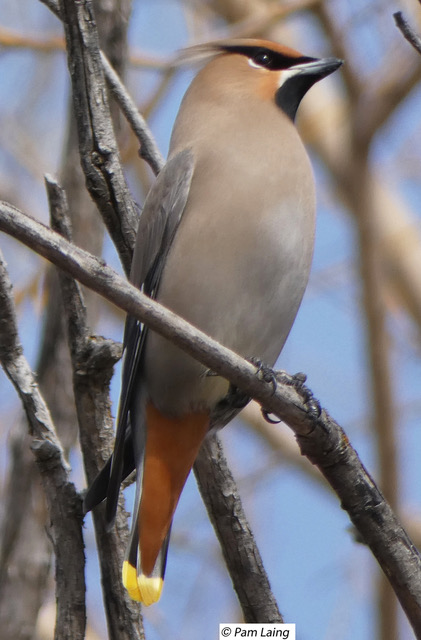
If you’ve seen flocks of waxwings during the winter wheeling overhead and descending to feed on berries in your garden or the local park you have seen Bohemian Waxwings. Most Canadians have heard of Cedar Waxwings as they can be found in summer across Canada, whereas Bohemian Waxwings are only found in the west. Each bird is about 8.5”/21 cm in length, with a pale greyish front and a darker grey on the back. The most striking features, however, are the bold black eye stripe, giving the bird the look of a bandit, and the crest at the back of its head. The tail has a yellow border and the wings an elaborate ladder-like pattern of black, white, yellow and the red waxy splotch that gives both species their name. The top of the head and under the tail is a rich chestnut colour.
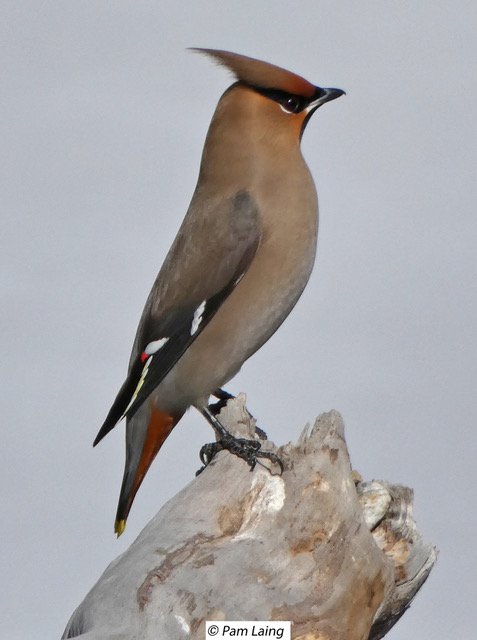
Bohemian Waxwings eat any insects available in winter but mostly they move around to find edible fruits such as mountain ash berries. Some years you hardly see any birds; this past winter they were here in large numbers. They will gradually move northwards over the next couple of weeks to their breeding grounds in the western sub-Arctic coniferous forest. During the breeding season they will feed mainly on the abundant insects of the north which provide protein for them and their chicks.
As we move into late April and early May we will see the first of many Cedar Waxwings return to breed here. Almost all of these birds move southwards in fall, though there are occasionally a few mixed in with the large flocks of Bohemians. You won’t see large flocks of Cedars, as by the time they return they are forming pairs ready to mate and raise a family. They are smaller than their cousins, about 7.5”/19 cm, and they too have the black eye stripe, crest, and a yellow tip to their tails. But they are a soft yellow on the belly, and pale brown on the neck, breast and back. The blob of red on their wings is small and there is no other colour there nor under the tail.
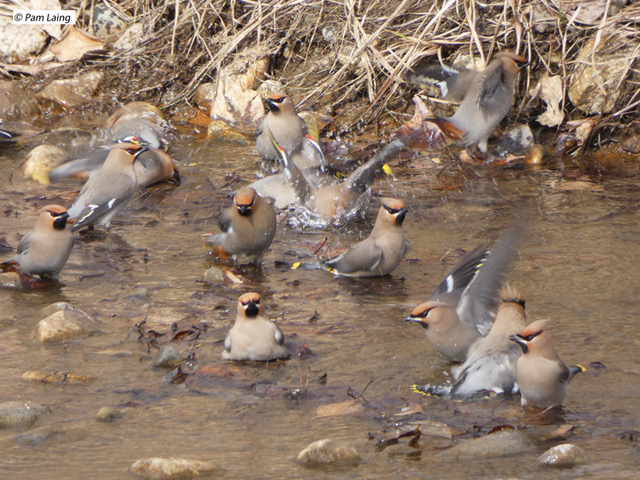
Cedar Waxwings like ripe berries throughout the year and in summer, like the Bohemians, they too catch insects to fuel growing young. When their young have reached full size in late summer you will see small family flocks of them feeding together, in perfect time to enjoy all the late summer wild fruits and berries.
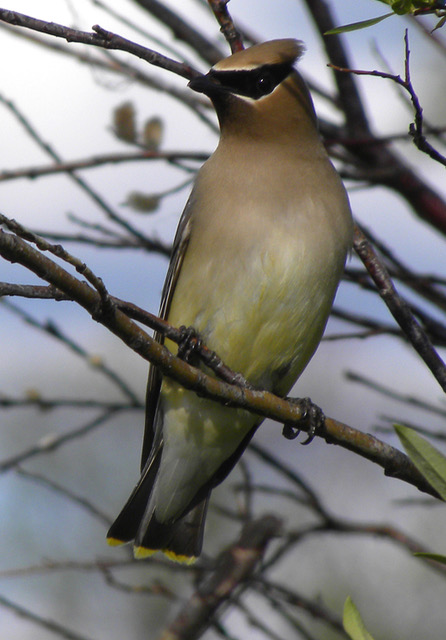
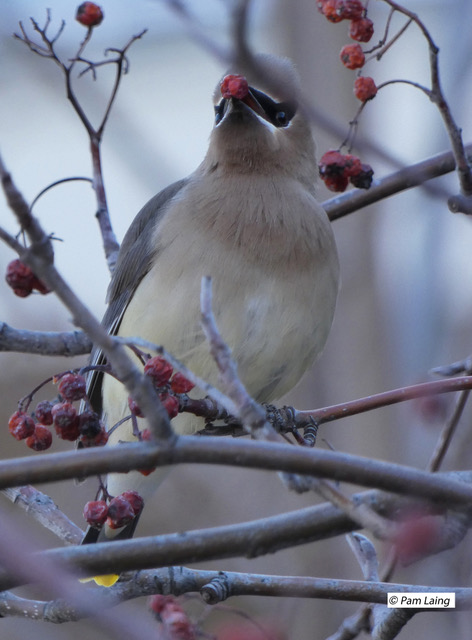
So fall migration will see the changing of the guard again, as Cedars move southward and Bohemians trail along behind to spend the winter months in the Okanagan. Next time you see a waxwing, check it out. Is it a Bohemian or a Cedar?
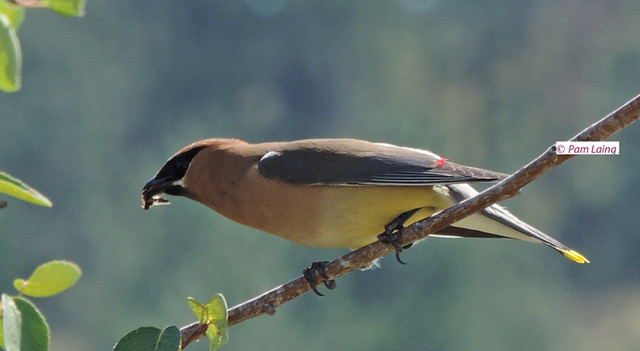







0 Comments